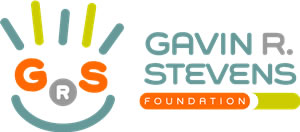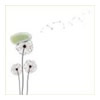 |
|
|||
Learning with GavinI received permission from Gavin’s OT (Occupational Therapist) at Blind Children’s Learning Center, to document photo/video of his sessions with her. I want to be able to look back at his progress. There are so many times things “click”, and I see it in his expression, I see it in his self confidence. I see it in his sweet smile! Peg dropping and pre cane
Today at Blind Children’s Learning Center, Gavin worked with pegs. He did very great with transferring the pegs from one hand to the other, and then drop them into the drum. (We use the drum, because it makes a distinct sound when something is dropped into it). He picked up the peg out of the peg hole with the left hand, transferred the peg to the right hand and then drop into the drum. His OT moved the drum from the front, to the back, and each time, he did fairly well listening to where the drum was and dropping the peg in. Ultimately, his OT would like for him to get the peg, and transfer it in one hand (across mid-line) and drop it in the drum. This technique is crucial to him utilizing his cane appropriately, with the long wide sweeps. The transfer of one hand to the other, and listening to the where the drum is was a big leap. He is using both sides of his body to complete a task. For a child with no vision, using both sides of your body, while trying to accomplish something (as simple to us as dropping a peg into a drum), and keeping yourself upright and straight and balanced is quite a feat. We use our eyes to stabilize our body, to keep us in balance. Remove the vision, and you need your entire vestibular system to work together to keep this balance in tact. The other part of his therapy today, was getting his tiny little hands ready for the cane. He has his cane now. His O&M brought it during our last visit, last week. He is not ready to use it, but we are getting ready for that. We have it hanging by the back door, so he knows, when we leave, the cane comes with us. We are moving closer to having him find and pick up his cane on his own, when we leave somewhere, but still working on it. Everywhere we go now, the cane comes with us. Usually I’m the “cane holder”. He really wants nothing to do with it, but as expected.
I talked on a previous post about “Pre Cane skills”. He uses his little shopping cart at home. At therapy, there is a different type of push cart they use for all the pre cane kiddos. His thumbs still aren’t quite there yet. It’s hit and miss. Some days when he pushes the cart, his thumbs are in the right position, other times not. You wouldn’t think, how much skill a little one needs to utilize a cane correctly – and not with bad habits. The other part of using the push cart, is just like the little shopping cart, or any push toy, the cart/toy will hit the wall before he physically does. The same with the cane. His cane will always hit something before he does, and so this is the same concept. Teaching him how to manipulate the push cart, comes with time. He is very confident behind the cart, and takes big wide steps, because he is understanding that he is safe behind it. Backing up, and maneuvering it back and forth when necessary – is still something we are working on. Put him on a straight shot of cement, and he will plow you over! He moves with such force, determination and confidence. It’s great to see, because at this stage, he is very cautious and moves slowly through space when he is in an unfamiliar area. Have I mentioned how great BCLC and his OT is? They’re wonderful. The other parents, and I, call his OT the “blind baby whisperer”. She helps me to understand so much, and I am so grateful for her and the services they provide.
This particular session we worked on his midline. Midline basically is the median plane of the body – basically working directly in front of him. Like many blind children, Gavin would throw objects he had in his hands. When he is all done, he throws them to the side/behind him. Getting his two hands to work simultaneously is something we have been working on for a long time. It will increase his strength for good cane use/control, as well as continue to work on the midline. This particular video shows Gavin working with two velcro squares. To a blind child, the velcro squares really don’t have any meaning. We had tried the squares (along with other pull apart toys) for weeks now. This was the first time, and I have it on video, that he actually worked at trying to pull them apart! He did not get frustrated that the first time attempt was not successful, he continued to try …and we pulled them apart! He took it a step further, and he put the squares together, and pulled them apart again. You can see from our reaction, we were elated. It’s these small things that we work on with him day in and day out, but not in such a way to where it is frustrating for him, or where his self confidence is hindered. Working on midline, is huge! Until he works more with midline, and using his hands in front of him, we can’t move to him brushing his teeth, feeding himself with a spoon, etc. We are getting there. Baby steps… You can see when he was done, they were thrown to the side – but not until after he pulled them apart. BCLC Bucket Swing
Gavin has a bucket swing at home. He is in the swing at least two times a day, it is part of his “therapy”, and allows for him to get the much needed vestibular input that his body craves. Gavin doesn’t really prefer the swings at the park, no matter how long we have him feel the swing. We don’t just plop him in anything unfamiliar. How scary would that be? Even though minutes of “feeling” the swing, he never takes to them very well. The same can be said for the same exact bucket swing at Blind Children’s Learning Center. It has taken us about 6 weeks to get Gavin to actually swing in the bucket swing at BCLC. Even though he loves his swing at home, it’s the same exact swing, and he is in it for up to an hour a day! It’s another reminder that even though he may be familiar with something in his own setting, the same cannot be said in unfamiliar territory. On our part it just takes patience, and working through. Like his therapist said, when he is put in a swing, he has no idea if he is 2 inches off the ground or 20 feet off the ground. I was so proud of this moment! Each week we worked with the swing, just for little portions of time. Nothing elaborate, but it is all part of the process. That is what I have learned over the course of Gavin’s life, which is so different from Landon. I have one son, who is sighted, and one who is totally blind. It’s two completely different worlds! Gavin takes a lot of time to get used to something – which I totally understand. When he finally allowed his therapist to put him in the swing, we were elated! We went from not even wanting to touch the swing, to touching the swing, to touching the ropes, to moving the swing, to pushing the swing, to singing while pushing the swing (which is a great indication he is enjoying himself) – to swinging in the swing! Such a small task for us sighted individuals, but it took a lot of work and trust!
After we accomplished the bucket swing, we tried the rectangle swing. Of course, the same scenario ensued with this swing. It took him the same time to become comfortable, but I believe the self confidence and knowing he is in a safe setting, and that his therapist would make sure to help him, gave him the courage to sit on the rectangle swing, and GET OFF on his own! Getting off of the swing, by his own will, was just as important as him mastering swinging in the swing. I’m so proud of him.
BCLC Jumping and proprioception
We talk often about proprioception at Blind Children’s Learning Center. It is such an important piece to Gavin’s awareness as he gets older. Proprioception doesn’t come from one specific organ, but rather from the entire nervous system as a whole. Its input comes from sensory receptors – nerves from inside the body rather that on the surface. Visually impaired or blind individuals don’t have a good sense of their space perception. This is very common. It’s basically understanding their place in space. This can be difficult without vision. Proprioception is the sense of the orientation of one’s limbs in space. Without proprioception, you wouldn’t be able to type at the keyboard and look at the screen – you would have to focus on your fingers to make sure they are doing what you want. If you happen to be reading while eating, you would have to stop every time you would want to put food in your mouth, to judge the position and orientation of your hands. The sense of position and movement of the limbs and the sense of muscular tension. The awareness of the orientation of the body in space and the direction, extent, and rate of movement of the limbs depend in part upon information derived from sensory receptors in the joints, tendons, and muscles. Information from these receptors, called proprioceptors, is normally integrated with that arising from vestibular receptors (which signal gravitational acceleration and changes in velocity of movements of the head), as well as from visual, auditory, and tactile receptors. Sensory information from certain proprioceptors, particularly those in muscles and tendons, need not reach consciousness, but can be used by the motor system as feedback to guide postural adjustments and control of well-practiced or semiautomatic movements such as those involved in walking. As you can tell, there is a lot going on that we don’t even realize! When you remove a sense, such as vision, spending time in certain areas can be crucial to development, and to reach a certain level of awareness. Getting Gavin to understand his position in space, is something we work on, constantly. Gavin loves to jump! It is satisfying the vestibular stimulation that I often talk about, as well as providing him proprioception awareness. Of course jumping to a cute little song, makes it even more fun. You can hear his therapist towards the end talk about the importance of proprioception in relation to his joints.
|
Donating Made Safe, Secure & Easy |
Our Foundation
|
Gavin's Groupies
|
Connect with
GRSF
|

